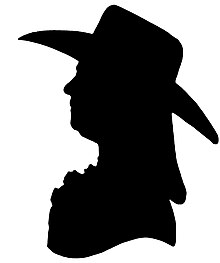White Watson
White Watson (born April 10, 1760 in Whiteley Woods near Ecclesall , † August 8, 1835 in Bakewell (Derbyshire) ) was a British geologist, mineral dealer, naturalist, sculptor and stone mason.
His father, Samuel Watson, made millstones in Baslow , Derbyshire , and his grandfather and great-grandfather of the same name were employed as stonemasons in the construction of Chatsworth House . Even as a child he collected minerals and fossils, which he also sold through his uncle's shop, who owned a water mill for cutting marble (especially for black marble from Ashford-in-the-Water in Derbyshire, Ashford Black Marble ) and with this acted. He also sold the area's Blue John fluorite . White Watson dropped out of school at the age of 14 and apprenticed to his uncle and then went into his business. He also worked as a stonemason and sculptor. After the death of his uncle Henry in 1786, he had his own business as a stone mason for gravestones and churches and dealer in fossils and minerals in Bakewell, where he also exhibited his finds. In 1798 he designed a crystal grotto at Chatsworth House, which was decorated with fossils (it was replaced in the 1830s). He had a good reputation as a naturalist and was visited by personalities such as Joseph Banks , Erasmus Darwin , William Buckland , James Sowerby and Alexandre Brongniart . He cataloged and expanded the mineral collection of Georgiana , Duchess of Devonshire (1799).
Inspired by local geological profiles by John Whitehurst (1782), Watson also produced geological profiles, which he even made with the original rocks as a diagram (1785). He made around a hundred of them with an explanatory sheet. Some are still preserved, for example in the Derby Museum and Art Gallery, British Museum, Chatsworth House, Manchester and Leicester Museum and Oxford University Museum. In particular, he made a profile of Derbyshire from Buxton (Derbyshire) to Bulsover in 1808 .
With William Martin he planned a book about fossils in Derbyshire in the early 1790s and wrote texts on it, but fell out with it when he published on his own. He used texts by Watson, but hardly mentioned them in his book.
In 1795 he became a Fellow of the Linnean Society of London . He was also a member of the Derby Philosophical Society and the British Mineralogical Society.
In 1808 he married Ann Thorpe, who died in 1825.
Fonts
- A Delineation of the Strata of Derbyshire , Sheffield 1811, Reprinted by Little Haywood, Staffordshire: Moorland Reprints 1973 (publisher Trevor D. Ford)
literature
- Trevor D. Ford: White Watson and his Geological Sections, Proceedings of the Geologist's Association , Vol 71, 1960, pp. 349-363
- Trevor D. Ford: White Watson: Pioneer Derbyshire Geologist . In: Bulletin of the Peak District Mines Historical Society , Volume 1, 1962, pp. 27-37
- Trevor D. Ford: White Watson's Tablets . In: Geology Today , Volume 14, 1998, pp. 21-25
| personal data | |
|---|---|
| SURNAME | Watson, White |
| BRIEF DESCRIPTION | British geologist and sculptor |
| DATE OF BIRTH | April 10, 1760 |
| PLACE OF BIRTH | at Ecclesall |
| DATE OF DEATH | August 8, 1835 |
| Place of death | Bakewell (Derbyshire) |

